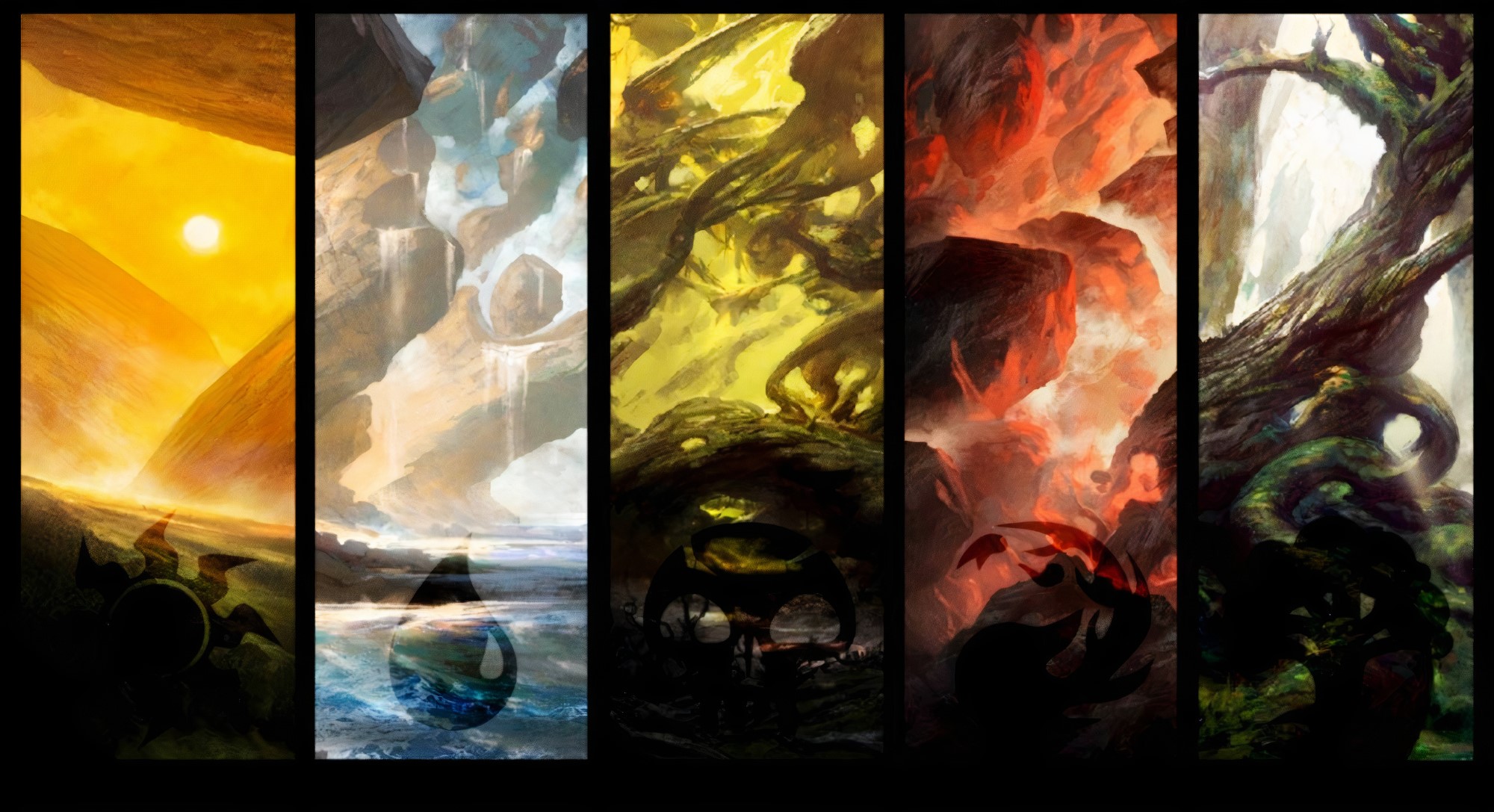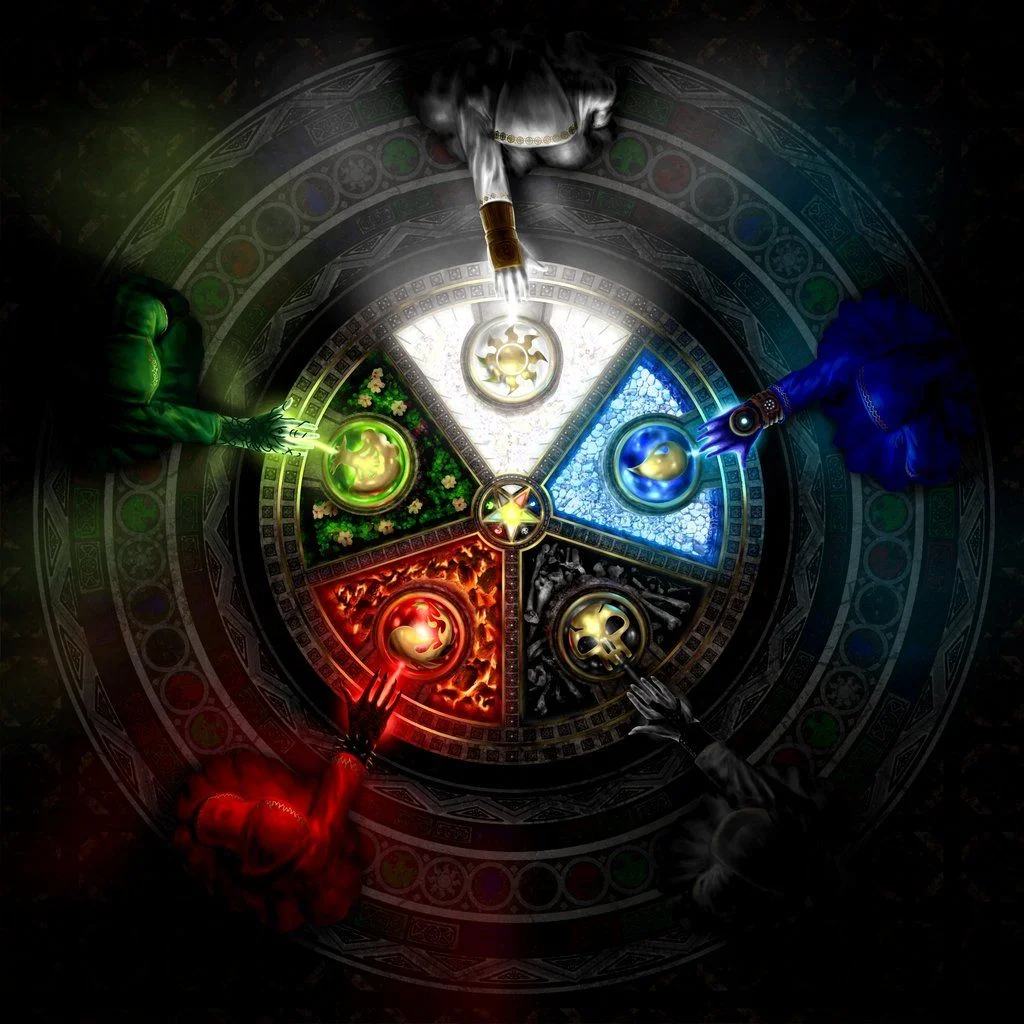
When choosing your ideal playstyle for each of Magic: The Gathering’s five colors, it’s important to understand the core philosophy, strengths, and weaknesses of each color. The game’s five colors—White, Blue, Black, Red, and Green—each represent different strategic approaches and types of gameplay.

Here’s a guide to help you align your preferred playstyle with the color that best suits you:
1. White: Order and Protection
- Philosophy: White focuses on order, peace, and structure. It values the community and often seeks to protect and enhance its own resources while suppressing the opponent’s threats.
- Strengths:
- Board Control: White excels at controlling the battlefield with cards that can lock down creatures, enforce rules, and stabilize your position.
- Life Gain: White decks often feature life-gain mechanics that help you survive longer.
- Tokens and Swarm Tactics: White can generate many small creatures (tokens) and use them to overwhelm opponents.
- Weaknesses:
- Reactive: White can be overly reliant on reacting to opponents’ moves rather than creating its own proactive strategy.
- Limited Card Draw: White typically lacks strong card draw options, leading to potential resource issues.
- Ideal Playstyle: If you enjoy building a strong defense, creating an organized battlefield, and winning through attrition or overwhelming numbers, White is likely your best match.
2. Blue: Knowledge and Manipulation
- Philosophy: Blue is all about knowledge, control, and manipulation. It seeks to outthink opponents, using a range of spells to control the game’s pace and flow.
- Strengths:
- Counterspells and Disruption: Blue is known for its ability to counter opponents’ spells and disrupt their strategies.
- Card Draw: Blue excels at drawing cards, ensuring a consistent flow of resources.
- Control and Manipulation: Blue can manipulate the battlefield with bounce spells, tap/untap effects, and deck manipulation.
- Weaknesses:
- Passive Play: Blue’s control strategy often means it reacts more than it acts, potentially leading to slow games.
- Lack of Direct Damage: Blue generally lacks ways to deal direct damage to opponents or creatures.
- Ideal Playstyle: If you enjoy outmaneuvering your opponent, controlling the game, and winning through incremental advantage or decking out your opponent, Blue is your color.
3. Black: Ambition and Sacrifice
- Philosophy: Black is about ambition, power, and the willingness to do whatever it takes to achieve victory, even if it means sacrificing your own resources.
- Strengths:
- Removal: Black has access to some of the best creature removal spells in the game, making it adept at clearing the board.
- Recursion: Black can bring back creatures and other resources from the graveyard, giving it a long-term advantage.
- Life Drain: Black often includes mechanics that drain life from your opponent, slowly whittling them down.
- Weaknesses:
- Life as a Resource: Black often trades life for power, which can be risky if not managed carefully.
- Dependence on the Graveyard: Black’s reliance on the graveyard can be a vulnerability if your opponent has graveyard hate.
- Ideal Playstyle: If you’re drawn to a ruthless, calculated approach where you can control the game’s pace and are willing to make sacrifices for power, Black will suit you well.
4. Red: Freedom and Chaos
- Philosophy: Red embodies freedom, emotion, and chaos. It’s about fast, aggressive play and embracing risk.
- Strengths:
- Direct Damage: Red is the king of direct damage, with spells that can hit both creatures and opponents directly.
- Aggressive Creatures: Red has fast, aggressive creatures that can quickly put pressure on your opponent.
- Chaos and Randomness: Red includes effects that add an element of unpredictability to the game, often turning the tide in surprising ways.
- Weaknesses:
- Low Defense: Red’s aggressive nature often leaves it with few defensive options.
- Burning Out: Red can exhaust its resources quickly, running out of steam if it doesn’t win early.
- Ideal Playstyle: If you love fast, aggressive gameplay, enjoy dealing direct damage, and aren’t afraid of taking risks, Red is the color for you.
5. Green: Growth and Instinct
- Philosophy: Green is all about growth, nature, and raw power. It seeks to overwhelm opponents through sheer size and strength.
- Strengths:
- Ramp and Mana Generation: Green excels at ramping, allowing it to play big creatures and spells faster.
- Large Creatures: Green has access to the biggest creatures in the game, making it formidable in combat.
- Creature Synergy: Green decks often synergize around creatures, making them stronger together.
- Weaknesses:
- Limited Interaction: Green often lacks ways to interact with non-creature threats.
- Vulnerability to Control: Green’s reliance on creatures makes it vulnerable to control strategies.
- Ideal Playstyle: If you prefer a straightforward, powerful approach where you can outmuscle your opponent with big creatures and overwhelming force, Green is your go-to color.
Choosing Multicolored Playstyles
Sometimes, your ideal playstyle might be a combination of two or more colors, allowing you to blend the strengths and mitigate the weaknesses of different colors. Experiment with different combinations to find the one that best fits your strategic preferences.
- White-Blue (Azorius): Control and order, with strong defenses and card draw.
- Red-Black (Rakdos): Aggressive and ruthless, with a mix of direct damage and creature removal.
- Green-White (Selesnya): Balance of growth and protection, with a focus on creatures and life gain.
Final Tips
Experiment: Try out different decks and colors to see what feels right.
Meta Awareness: Consider the current meta and how different colors perform against popular strategies.
Personal Preference: Ultimately, your enjoyment is key, so choose the color or combination that aligns with how you like to play the game.
By understanding the core philosophies and strengths of each color, you can better align your playstyle with the color that best suits your approach to Magic: The Gathering game. I suggest that if you have the resources or decks allotted for each color’s gameplay, try all of them and see which one will fit your liking.
